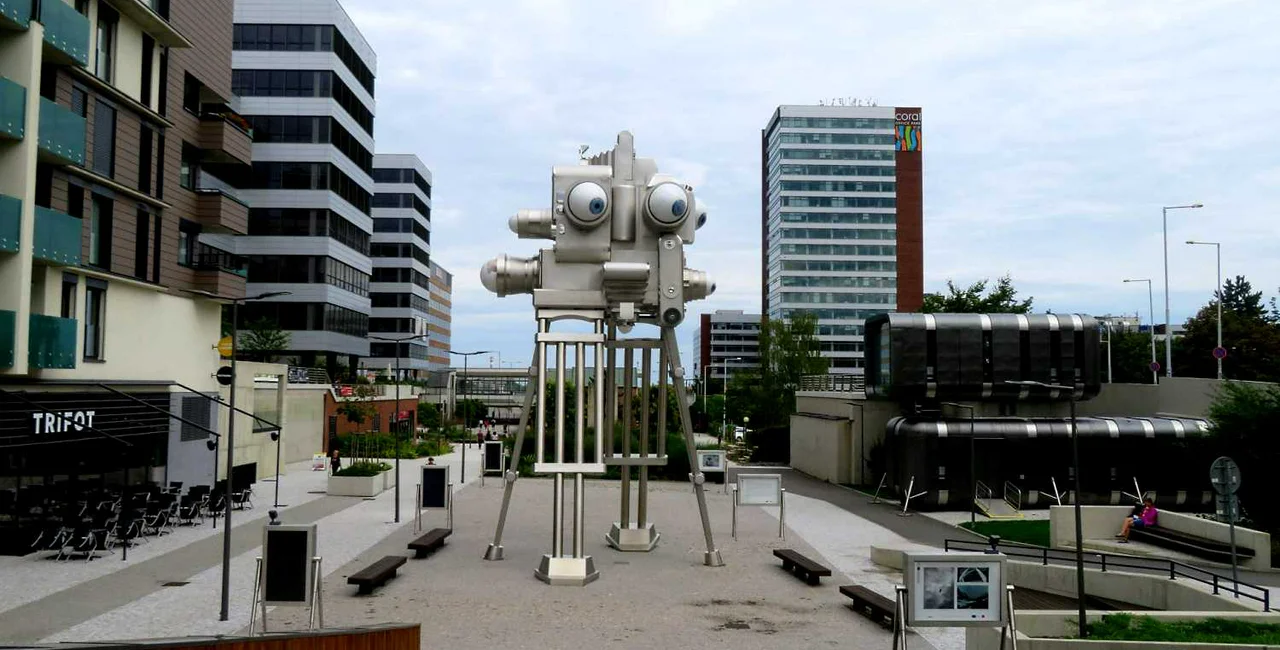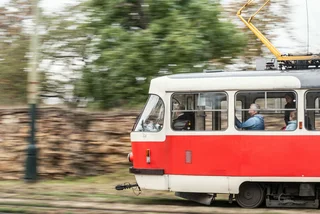Prague often seems like an open-air gallery of Baroque statues. But there is a lot of modern art as well, and much of it comes from one local artist, David Černý. He has been active both in Prague and internationally since the 1990s, first with provocative street art and more recently with large installations for real estate developments.
He is perhaps best-known for his Babies (Miminka) on the Žižkov Television Tower and in front of Museum Kampa, as well as the rotating mirrored Head of Franz Kafka (Hlava Franze Kafky) behind the Quadrio shopping center on Spálená Street, but there are several others. The number constantly changes, as some are taken down for various reasons and others are added.
He got his start with provocative street art, and is sometimes referred to as the Czech Banksy, though Černý is quick to point out his career started earlier, and Banksy should be called the British Černý.
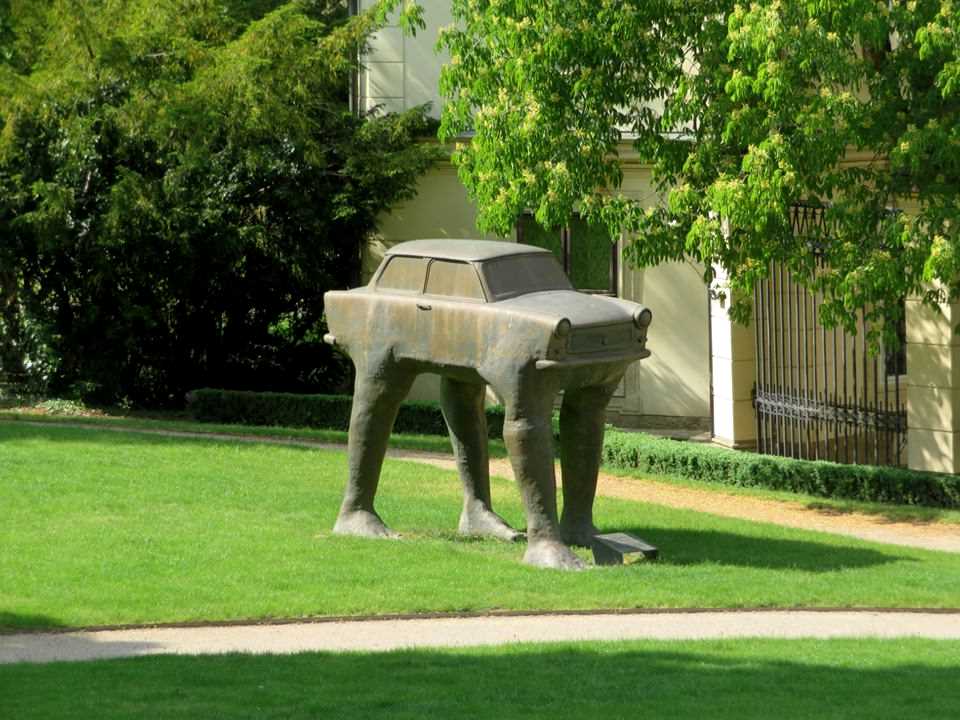
The oldest work that can currently be seen from public is also one of the hardest to find. Quo Vadis, from 1990, currently stands in the garden of the German Embassy in Prague, and can be seen from Petřín park through the embassy’s back fence. There is an entry to the park on Vlašská Street, opposite the Church of Karel Boromejský, leading to the overgrown path with a view of the embassy garden.
Quo Vadis, a metal depiction of an East German Trabant car on four legs, was the first piece to get international attention for Černý. It commemorates the East Germans who came to what was then the Embassy of West Germany in the summer and autumn of 1989 in an effort to get out of the Eastern bloc.
The original is owned by Leipzig’s Forum for Contemporary History. The one in Prague is bronze casting that has been behind the German Embassy since fall 2001.
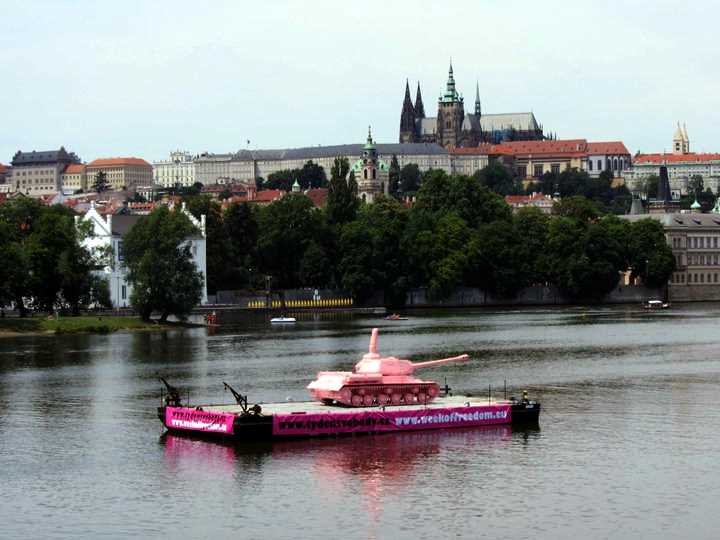
His next famous work currently isn’t in Prague, though it has been shown here on occasion, lastly in 2011. Now it is at the Military Technical Museum Lešany.
PARTNER ARTICLE
The Pink Tank was originally at náměstí Kinských. On April 28, 1991, when Černý painted a Soviet tank pink. The IS-2 No. 23 tank on a stone pedestal was a memorial to the Soviet Army for liberating the city at the end of World War II. Černý was arrested briefly for hooliganism, and the event became quite a scandal. The tank was soon removed from the square and the pedestal was destroyed.
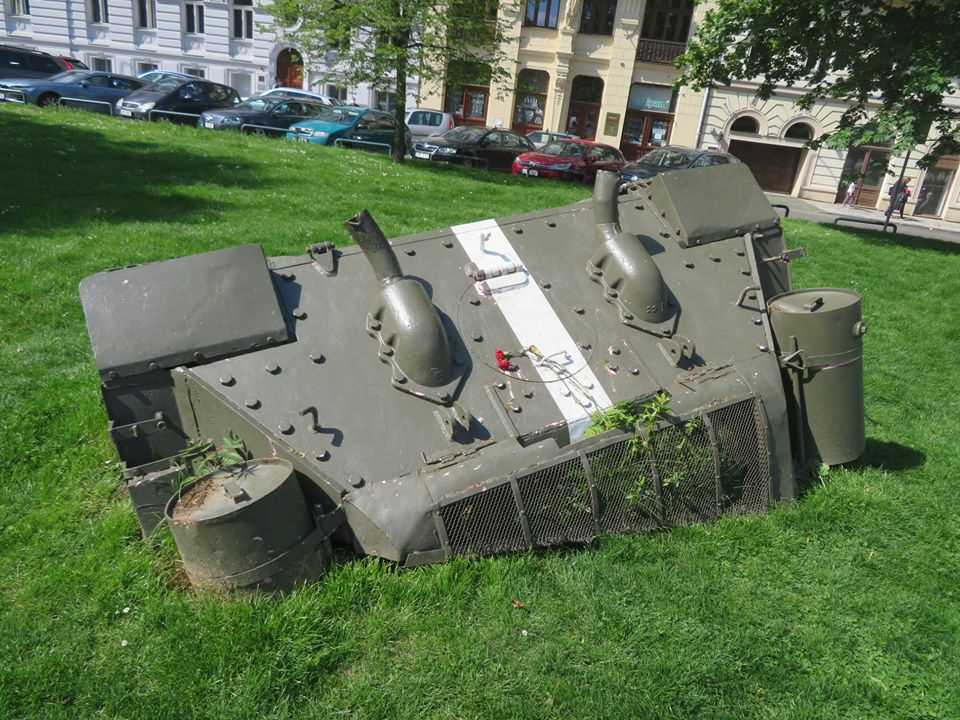
But the idea of the tank isn’t gone completely. Since September 21, 2018, the 50th anniversary of the Warsaw Pact invasion, a depiction of the back end of a Soviet tank sticking out of the grass has been at náměstí Kinských. Invasion Tank Torso (Torzo invazního tanku) was supposed to be temporary but has stayed on.
The tank is in military green with a white stripe, similar to the tanks that invaded in 1968. A pink version appeared briefly in 2008 for the 40th anniversary of the invasion.
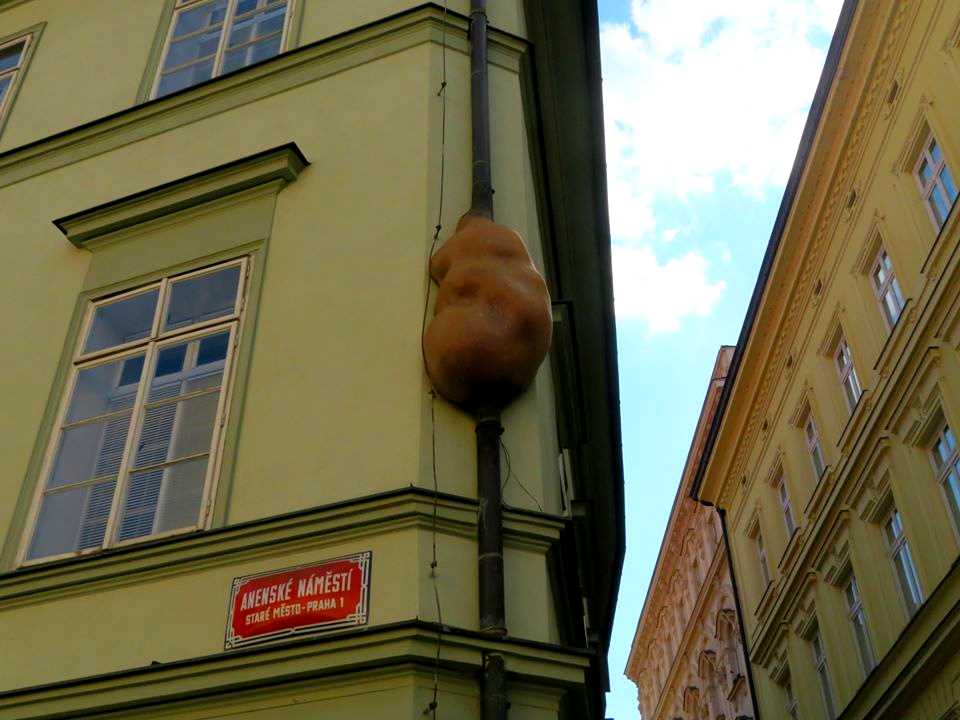
One of his more obscure works is Embryo, made in 1996 and installed in 2008 on the side of the divadlo Na Zábradlí to celebrate the theater’s 50th anniversary. The metal, foam and LED blob, is meant to look like some sort of alien embryo growing on the building and it lights up at night. The theater and the blob are at Anenské náměstí.
You have to look up to see the next one, called Hanging Out (Viselec). The 2.2 meter tall figure of a man hangs by one hand from a pole above Husova Street next to Betlémské náměstí. The man is none other than Sigmund Freud, and while it looks like bronze it is actually fiberglass.
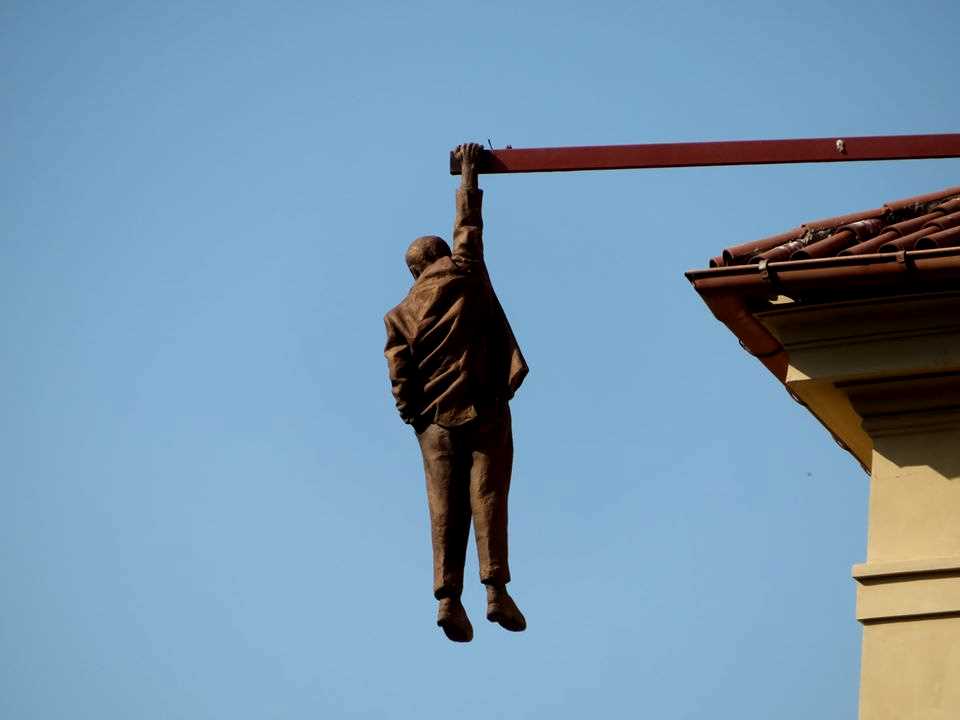
The work dates to 1997, when it was displayed from Villa Richter, the classical-style house on a hill above the Malostranská metro station. It then traveled the world a bit, sometimes generating calls to the police from frightened spectators. It has been in its current location since 2009.
In Palác Lucerna, you can find Horse (Kůň), a depiction of St Wenceslas on top of an upside-down dead horse suspended by its feet. Originally in 1999 it was in the lower part of Wenceslas Square, but was moved to the passage under an agreement with Lucerna owner Dagmar Havlová, the sister-in-law former Czech president Václav Havel. (His widow has the same name, causing some confusion.)
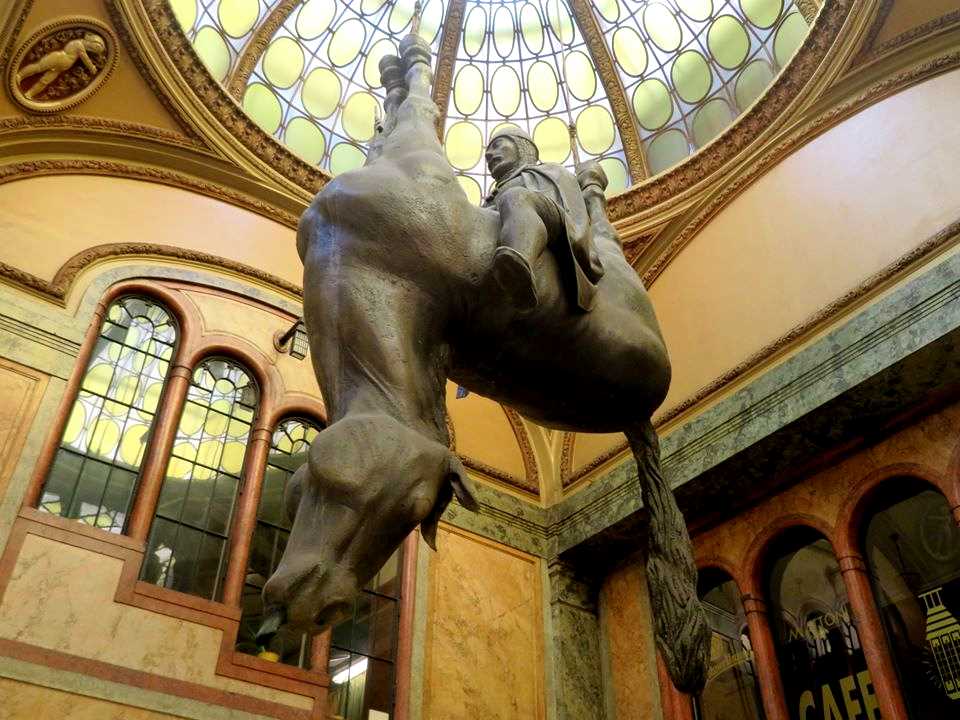
The polystyrene sculpture is inspired by the famous statue of St Wensceslas by Josef Václav Myslbek on the top of Wenceslas Square. It hangs under a glass dome, near the cinema box office.
The statue was made when politician Václav Klaus was leader of the then-powerful Civic Democrats (ODS), just after Klaus was prime minister and before he was president. Václav is the Czech form of the name Wenceslas. Many people suspect the statue was a comment on Klaus, but Černý has not confirmed this. He has made other political statements, though. In 2013, after Miloš Zeman was elected president, Černý placed a giant purple hand with a raised middle finger on the Vltava in view of Prague Castle.
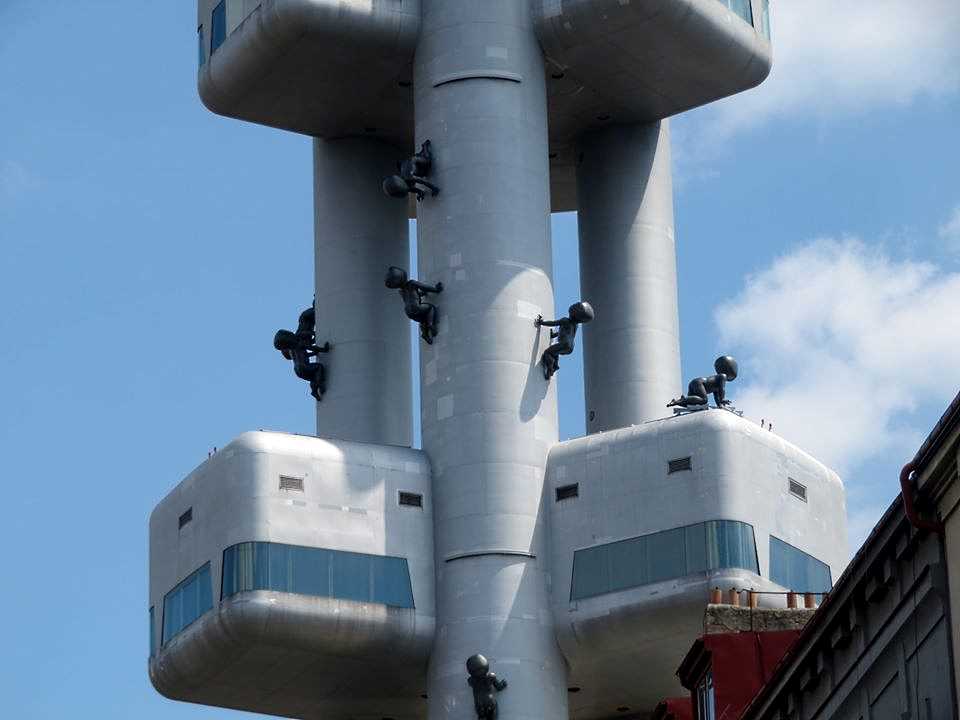
The Babies on the Žižkov Television Tower are next, chronologically, dating to 2000 when Prague was a European City of Culture. They were intended to be temporary, but in 2001 were reinstalled as a permanent exhibit, and have helped to make the until-then unpopular tower into a local symbol for the Prague 3 district and trendy Žižkov neighborhood.
The babies on display now are copies with new internal engineering, as the originals were never meant for permanent display.
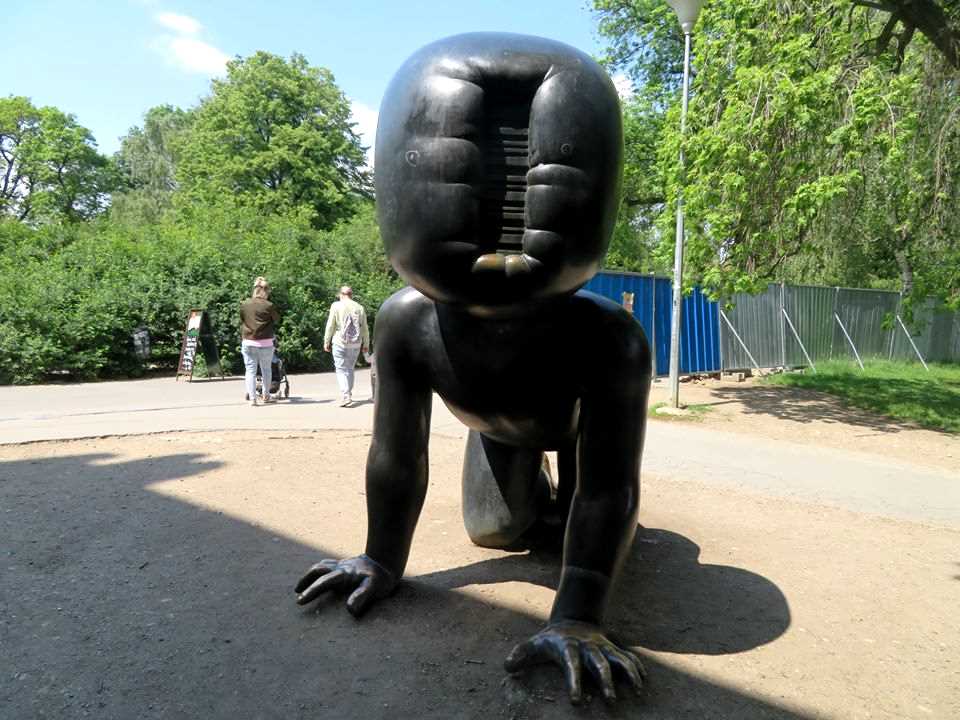
The first Baby was made in 1994 for an exhibition at the Chicago Museum of Modern Art, and the later ones were cast from that. There are also three bronze Babies outside Museum Kampa, and people climb on them to make photos.
The moving fountain Piss (Čůrající postavy) was installed outside the Kafka Museum in a courtyard on Cihelná Street in Malá Strana in 2004. “The idea is disarmingly simple. Two bronze sculptures pee into their oddly-shaped enclosure,” Černý said on his website. The pond they are standing in has an outline similar to the map of the Czech Republic.
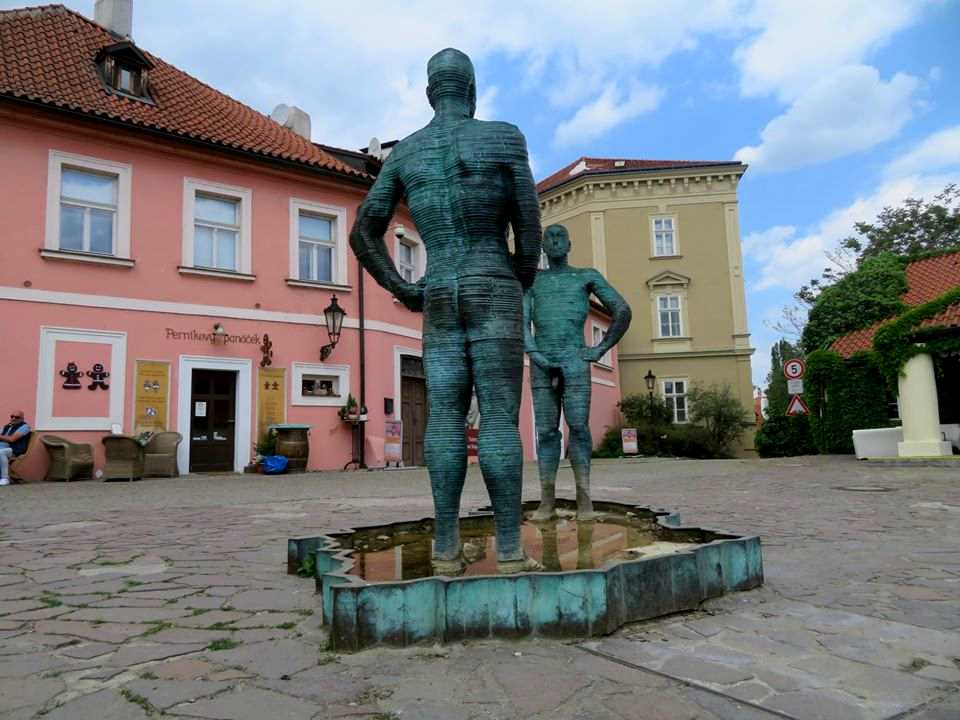
“While they are peeing, the two figures move realistically. An electric mechanism driven by a couple of microproccesors swivels the upper part of the body, while the penis goes up and down. The stream of water writes quotes from famous Prague residents,” he added.
Černý opened the original art space Meet Factory in 2001 in Holešovice in a former meat processing factory, as Holešovice was home to a huge slaughterhouse. The 2002 floods forced him to move, but he kept the name when he reopened in Smíchov in a former railway building in 2007. Getting there requires a short hike uphill from the Lihovar tram stop.
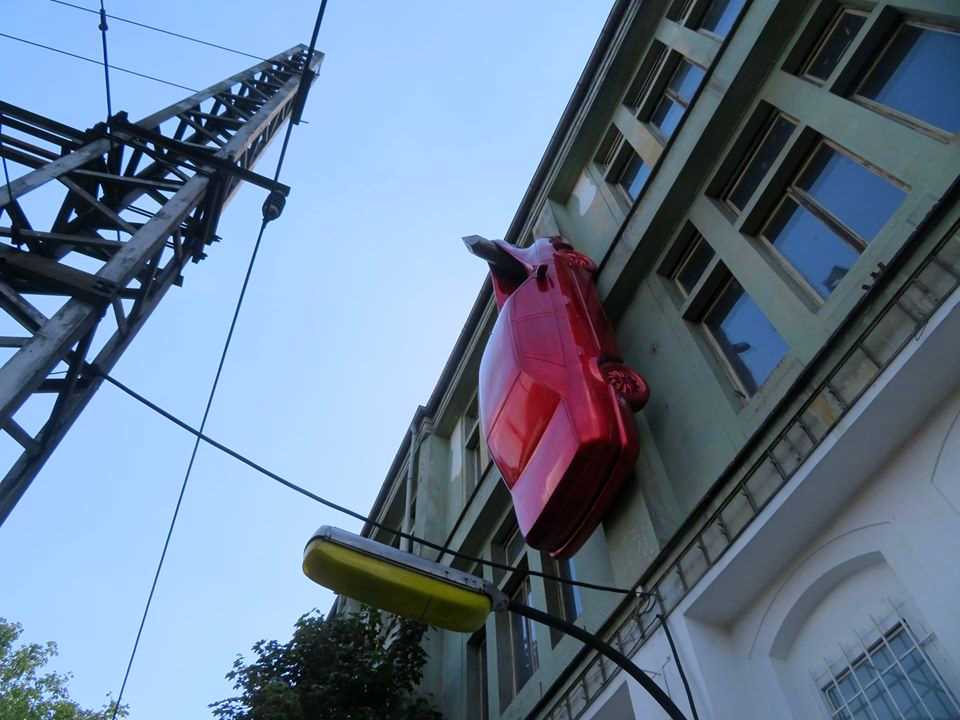
The facade of the new Meet Factory has two red cars, depicted as if they are hanging on meat hooks. Černý won the Jindřich Chalupecký Award for the piece and accepted in in front of Veletržní palác. He refused the enter the National Gallery’s building due to a dispute with its director at the time, Milan Knížák.
Another hard to find work is London Booster, which was made for the 2012 Olympics and originally stood in London near where the Czech teams were based. It is now in front of an Agrofert office building in Chodov, near the Benkova bus stop.
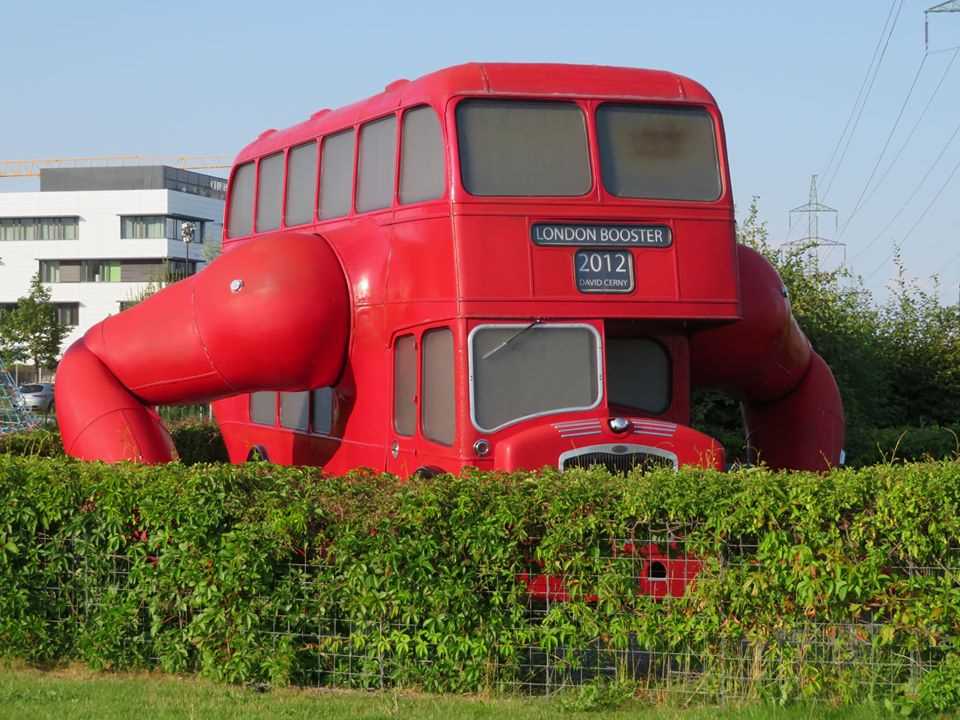
The bus does push-ups every day for half an hour starting at 3 pm., except when weather forbids it. The main part of the sculpture is an actual London double decker bus, obtained from a Dutch dealer, with hydraulic arms now attached.
The plaza behind the Quadrio shopping center the Head of Franz Kafka, a solar powered large metal bust of the writer. It is across the street from is one of Prague’s administrative buildings where people have to go to deal with the city’s Kafkaesque bureaucracy.
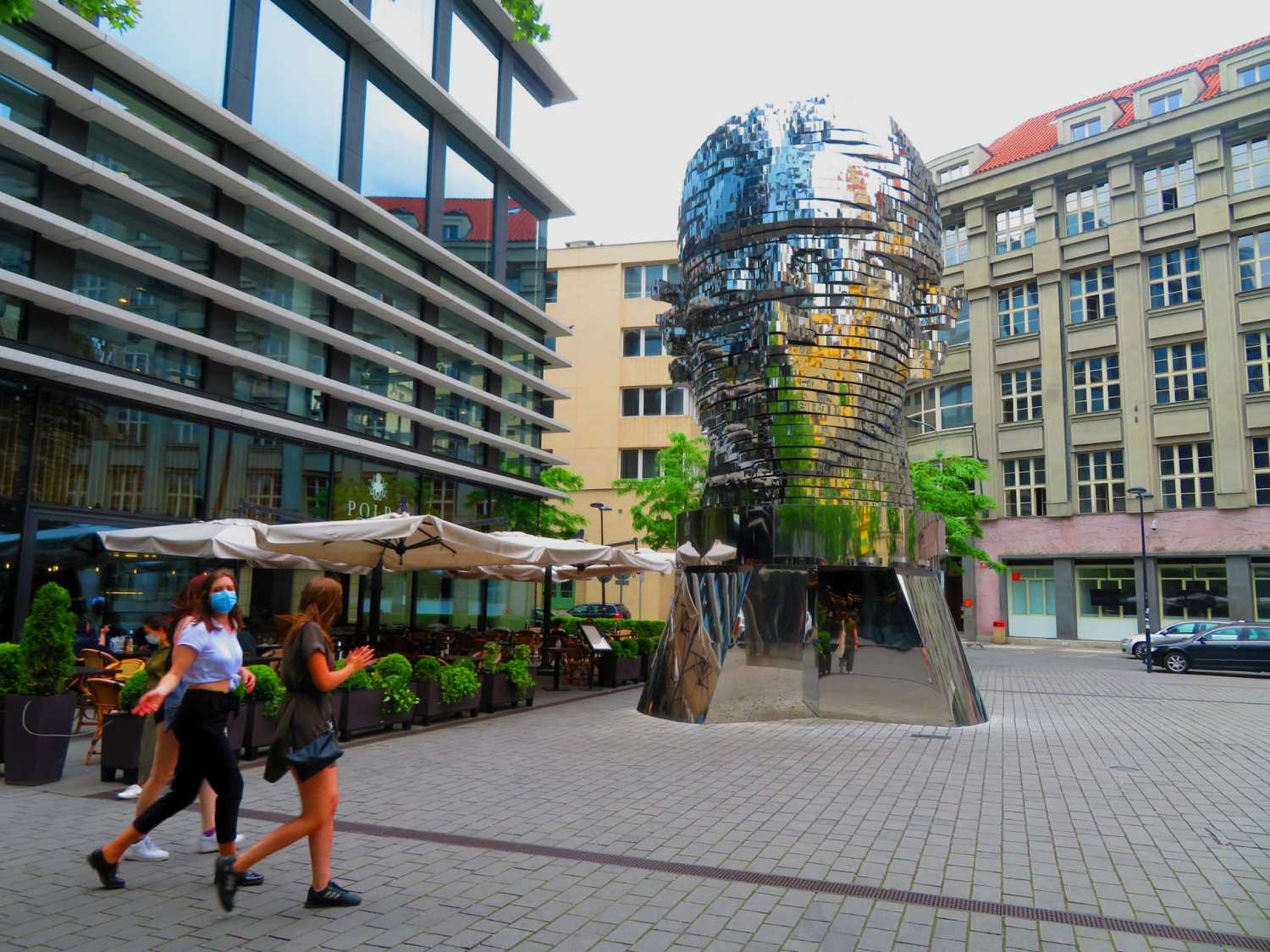
The head is 10.6 meters tall and made of 42 rotating flat slices. The technical marvel of robotics took over seven months to build in 2014.
Located in front of the Czech Photo Centre near the Nové Butovice is Trifot, a 12-meter-tall stainless steel figure with cameras for heads. Černý’s inspiration was John Wyndham’s sci-fi book, The Day of the Triffids. It was installed in late 2016. The cameras function, and can display the passersby on screens next to it, but no recordings are made.
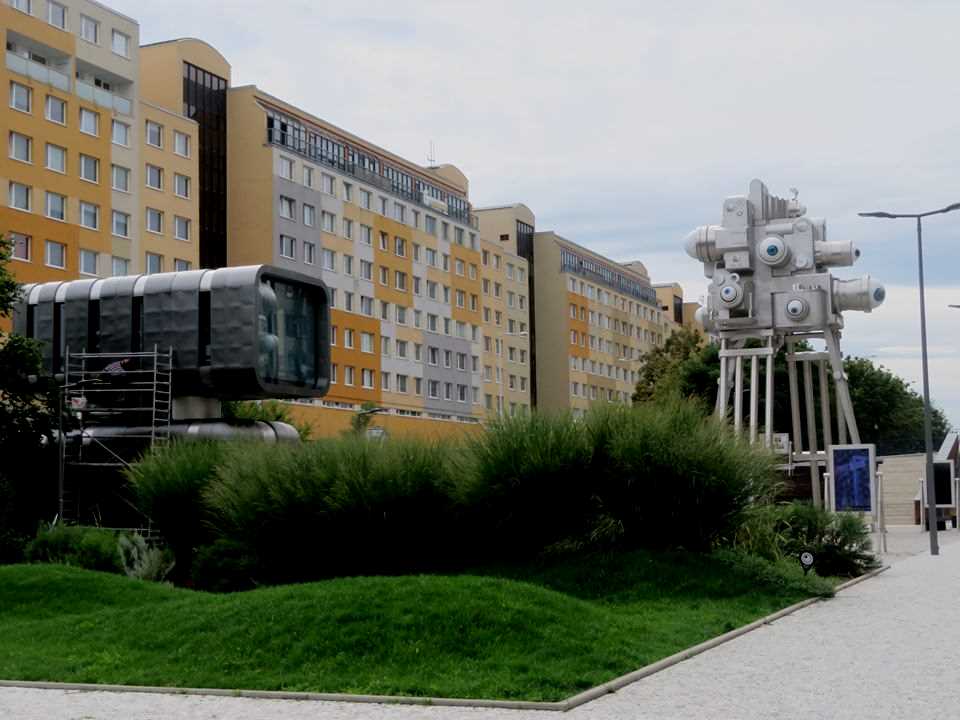
Nearby is the Cyberdog bar, which was developed by Černý and architects from the Black n’ Arch studio. A robotic arm pours your drinks after you order from a tablet.
The new Waltrovka development near the Jinonice metro stop in Prague 5 has two recent works. Pegasus (Pegasové), unveiled in 2017, is a set of three figures that combine metal depictions of horse legs and plane engines with rotating blades. The are the centerpoint of the new Walterovo náměstí.
The idea behind the sculpture was to pay homage to the location’s history as an aircraft engine factory. The company was not successful after the Velvet Revolution, and assets including the factory brownfield were sold off.
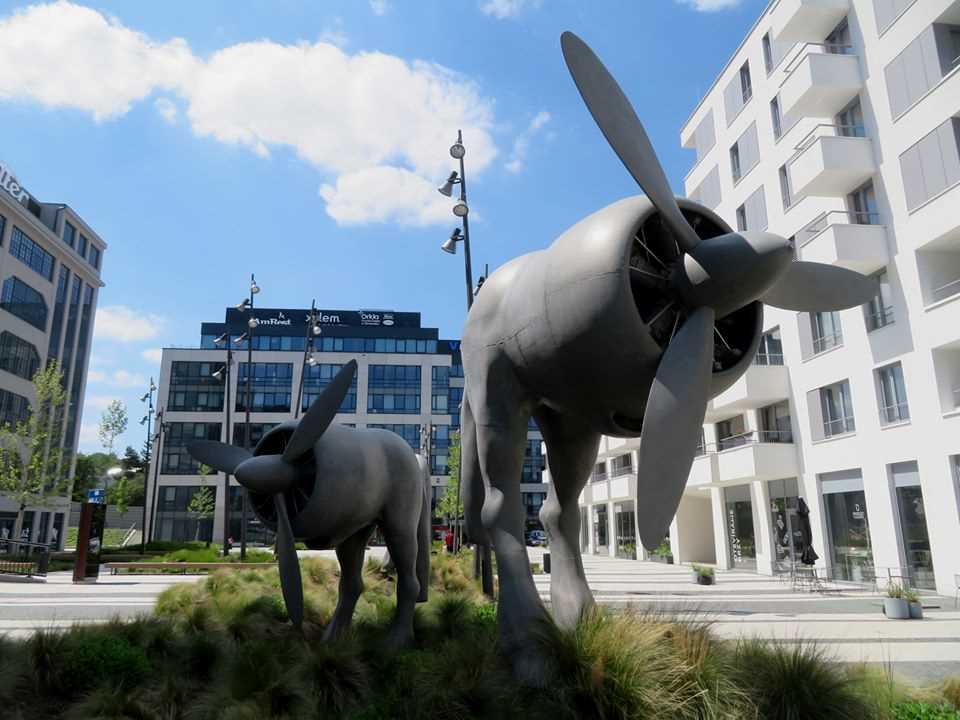
Nearby in the entrance to the Aviatica building is Speederman, a four-meter-tall naked silver-tone superhero, with lights trailing behind him to imply motion. It is not related to any actual comic book figures, though.
The sculpture that made its debut in 2013 in Amsterdam, and a year later was in the 2014 Signal festival of light art in front of the Dancing House, before being moved to its permanent location in Jinonice in 2017.
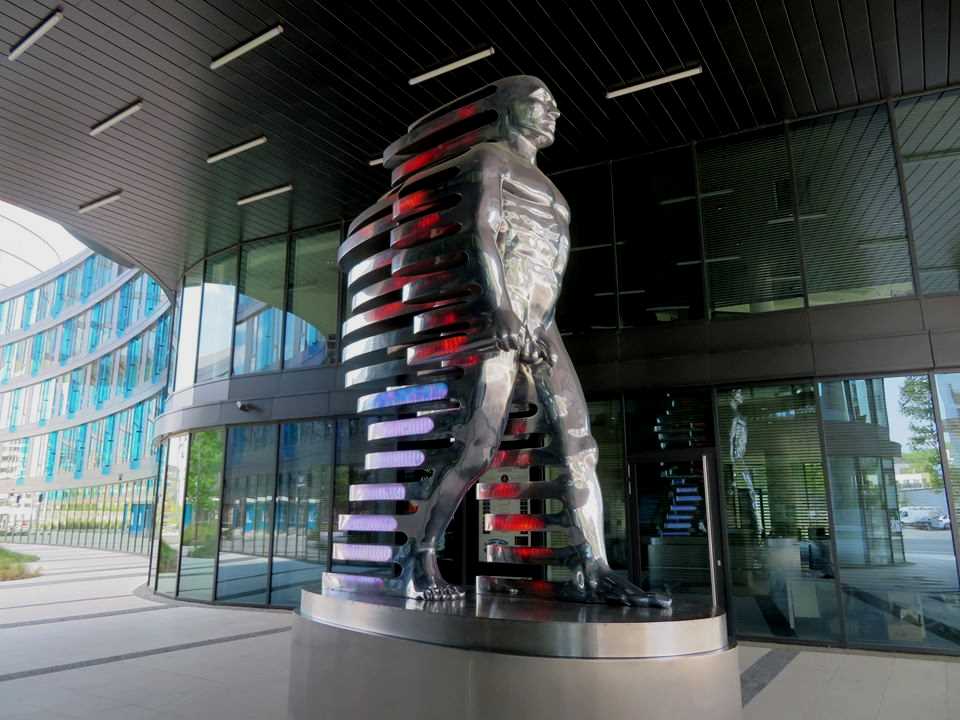
“It may thus represent a metaphor for human evolution and aesthetic ideals of the human body, but also a commentary to the accelerated rhythm of life in the current new technological era,” Signal said when it was at the festival.
Černý’s most recent work is Beetle (Brouk), an almost 17-meter-high, eight-meter-long and three-and-a-half-meter-wide sculpture is located by the Alpha office building of BB Centrum in Prague 4 on Vyskočilova Street. It took nearly two years to make and was unveiled in early April 2020.
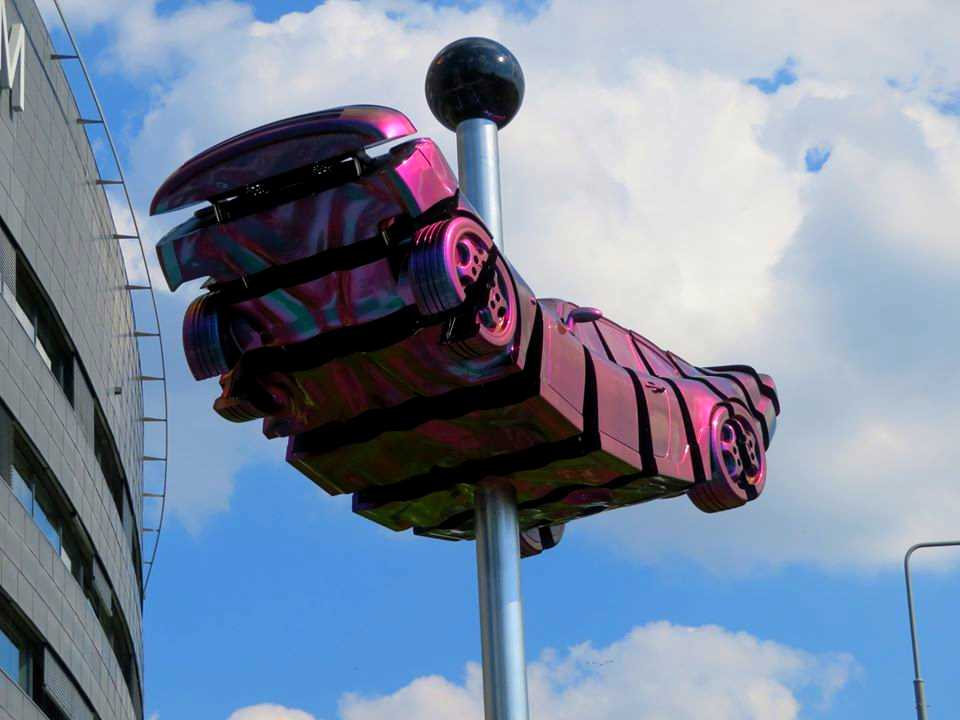
An iridescent image of a Porsche 911 squirms on an oversized pin, like a newly trapped insect in collection. “Why a moving car? Its location by the Prague expressway, my ambivalent relation to the car on one hand, the dark side as a societal fetish, on the other hand a heavy addiction to the iconic Porsche 911 automobile since my childhood,” Černý said at the time.
There are also some large works in Prague galleries, which technically aren’t visible from public. These include Brown-nosing at Futura Gallery, where people can climb up to peer inside an giant backside to see a video of Václav Klaus and Milan Knížák eating porridge. Another is Fast Tuned Skull at the DOX Centre for Contemporary Art. It features a red fiberglass skull on a rotating armature.
His 2013 sculpture In Utero, which used to be on a small triangle of land on Dlouhá Street, is now at the nine-hole Golf Hostivař. It is a depiction of a pregnant woman made out of mirrored blocks.
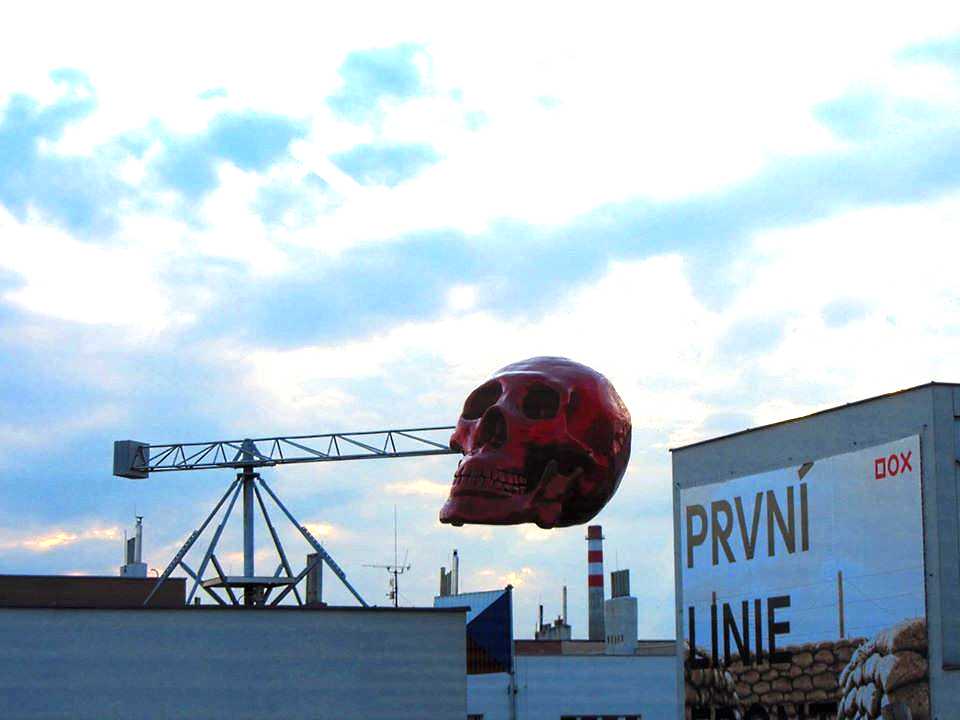
Some future projects have been announced as well. If the plan is approved, the largest building in Prague will include a replica of a rusted ship crashed into it. The installation would be at Nové Butovice, near his already standing Trifot.
There is also a plan to create giant metallic figures seeming to be holding up a new residential building called Nová Invalidovna in Prague’s Karlín section.
Another plan for the future is to make a locomotive-shaped walkway between two buildings in Prague 9. It is inspired by the famous photo 1895 Montparnasse derailment, with a train protruding out of a station building.












 Reading time: 9 minutes
Reading time: 9 minutes 